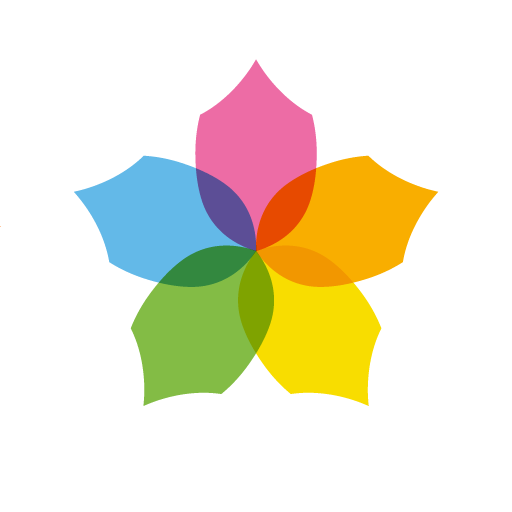One of the tips that my game design teacher would often give on memorable level design is this: Design your level so that it can be described with a single word.
Monument Valley is a particularly wonderful game series to illustrate this particular point, so let's delve into the level design of this game.
Monument Valley is set in an isometric perspective featuring 3D 'impossible' geometrical structures. The protagonist must navigate visual puzzles centred around illusions that emerge when 3D structures are displayed in an isometric projection.
All the levels are distinctive.

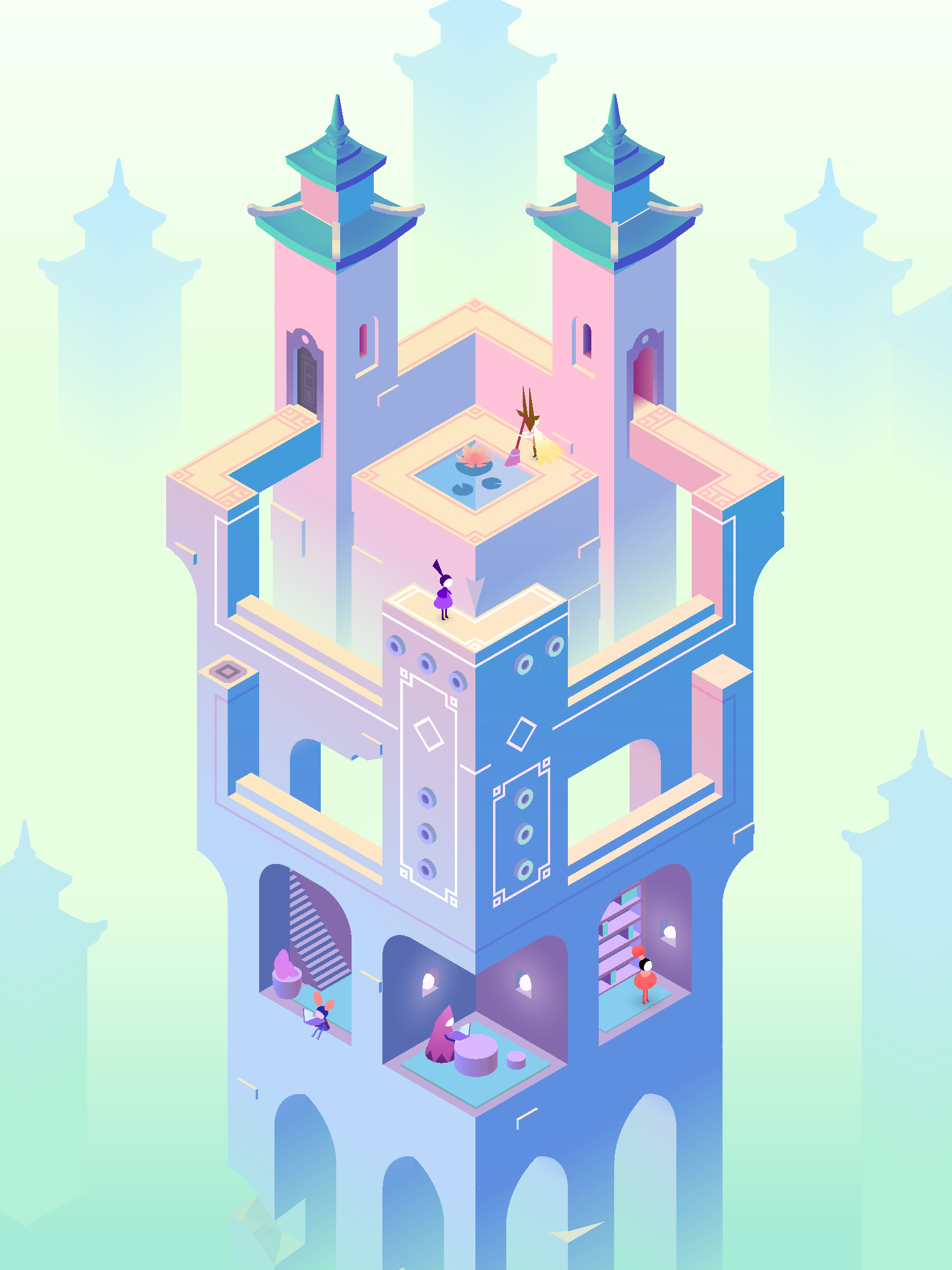
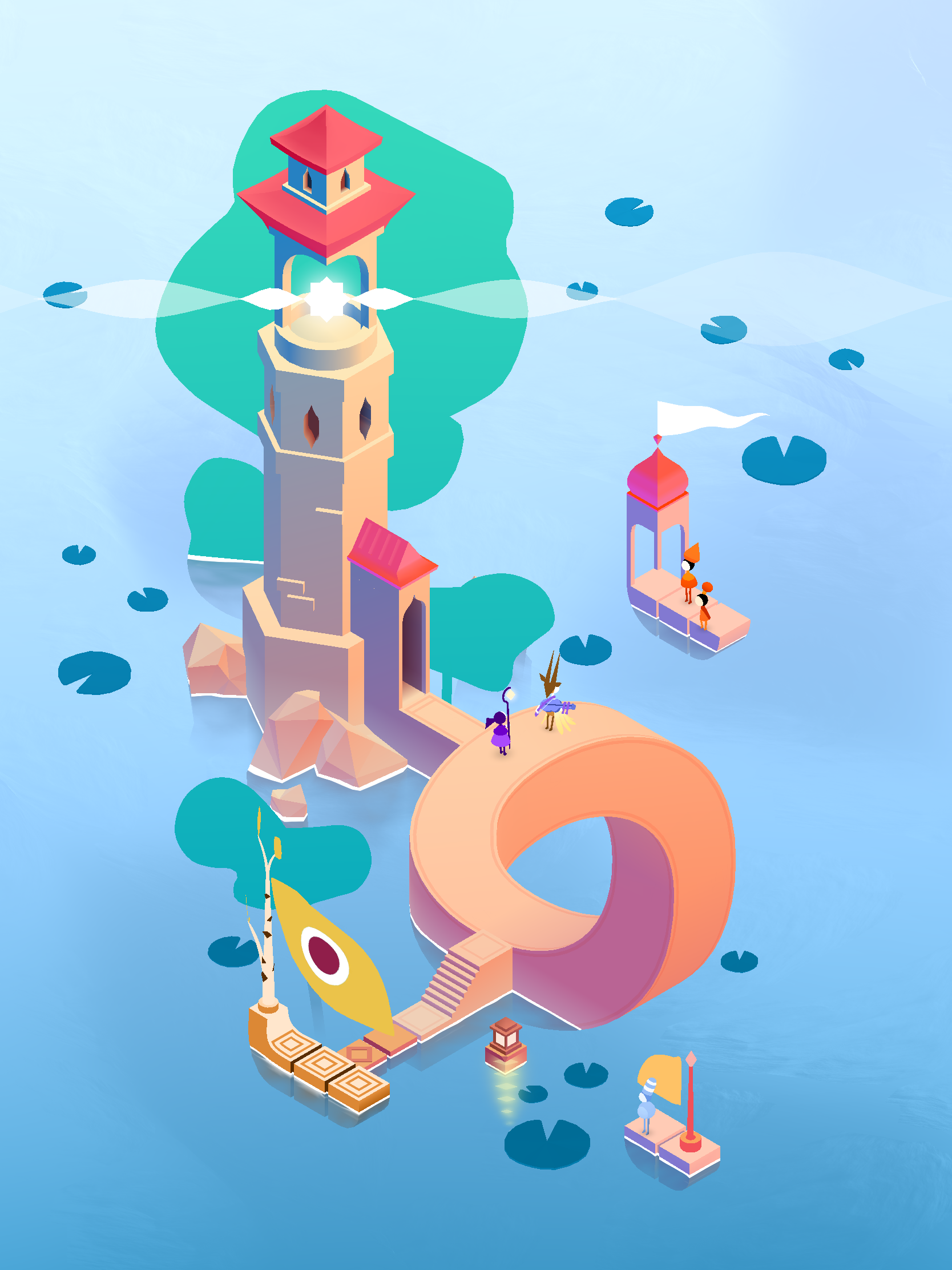
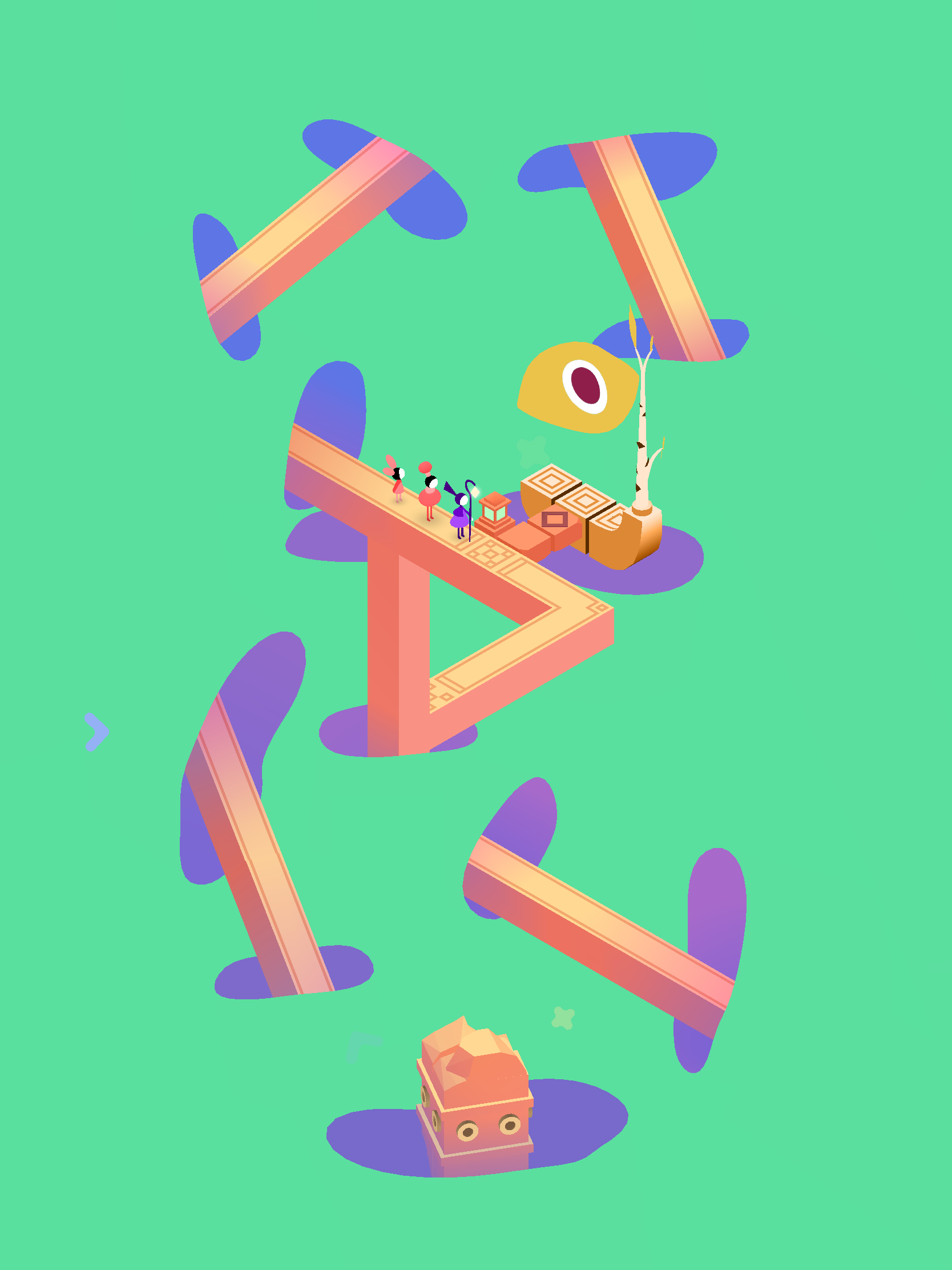
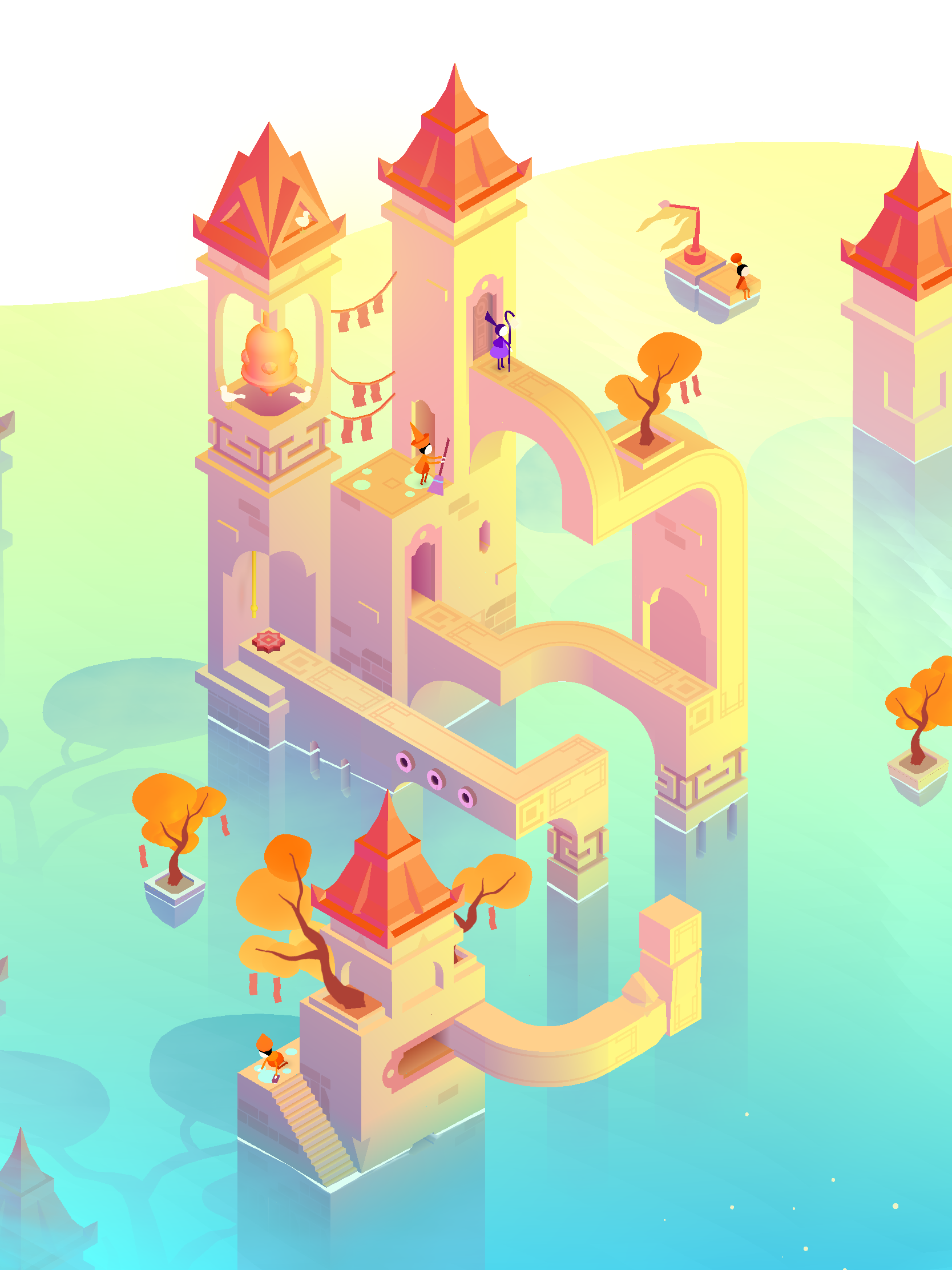
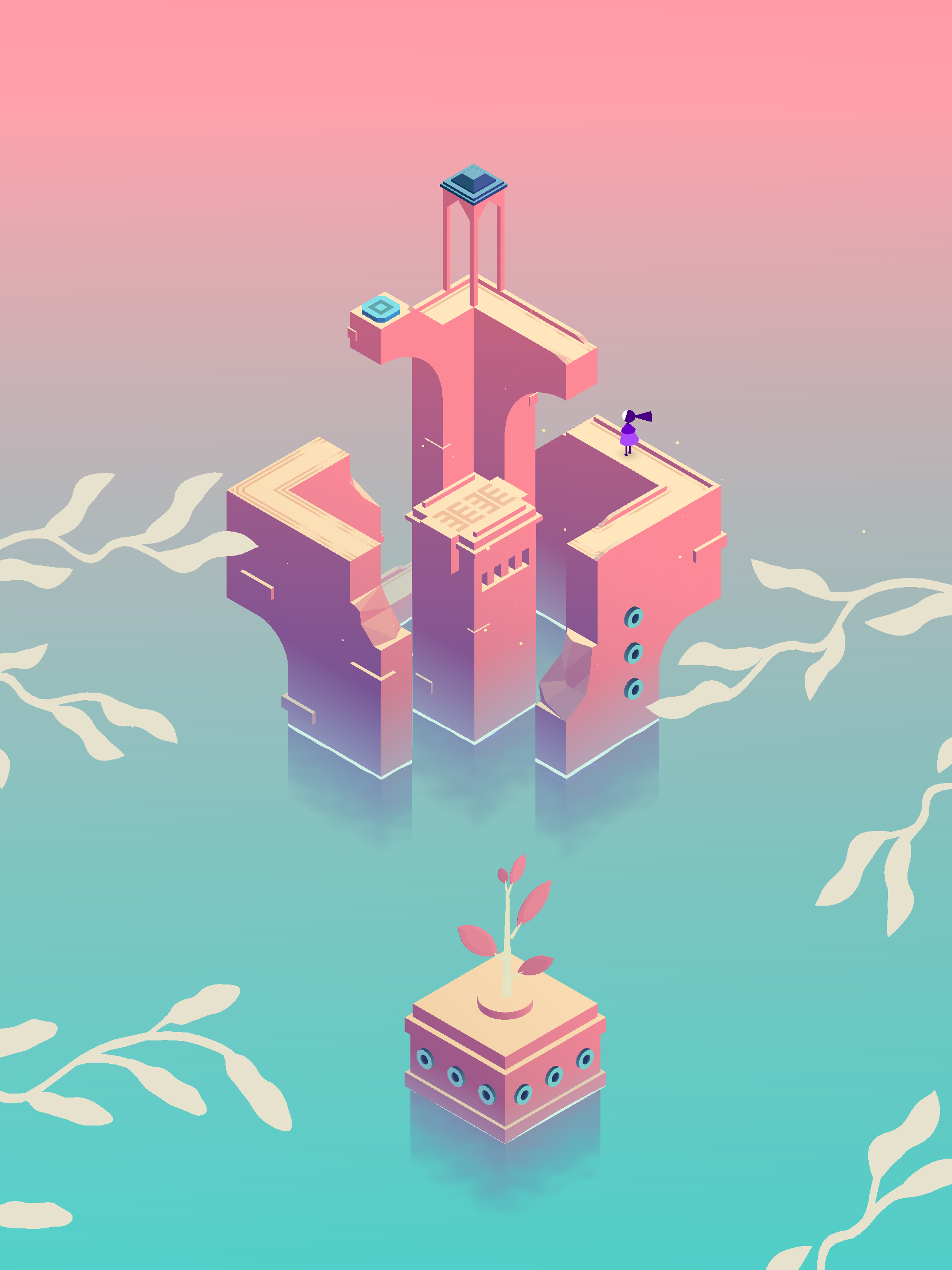
Screenshots from Monument Valley 3
The level design also incorporates motifs from the human world and natural world to ground itself and provide familiar contexts. This includes plants, pagodas, temples, domes reminiscent of mosques, churches and more.
The game also draws upon other motifs from real life for mechanics including spigots and more.
Another aspect of level design is showcasing your game's mechanics as well as introducing the player to new mechanics.
Introducing mechanics
Impossible Triangle
The very first level in Monument Valley is a basic and essential level that introduces the player to the famous Impossible Triangle. This allows players to acquaint themselves with the nature of illusions that Ida, the protagonist, will encounter in the game, and shows them how Ida is able to navigate such a structure.
Order of designing levels
Another tip is to design levels in this order of difficulty: medium, beginner and hard.
This is because as a designer, you are familiar with the mechanics so it's easiest to design levels of medium difficulty first. It takes some adjusting to see things from a beginner perspective. Once you've designed levels, it's easier to realise what a beginner needs to know.
As a player, you would encounter the levels in the order of beginner, medium and difficult.
Another level design tip is that level design is what makes your mechanics shine.
Unique recognisable levels
Motifs
Incorporating motifs is one way to make levels recognisable
Signposts & Landmarks
Shapes & Silhouettes
Another way is to make use of shapes and silhouettes to make levels easily identifiable.
Color Palettes
Color palettes can be useful for setting the tone and mood, and for capturing emotional development, as well as for identifying and distinguishing levels.
Design concepts
This includes the CMYK subtractive color-mixing
As well as a linear 2D path in the final puzzle of Monument Valley: Forgotten Shores
Another tip is to write everything down
